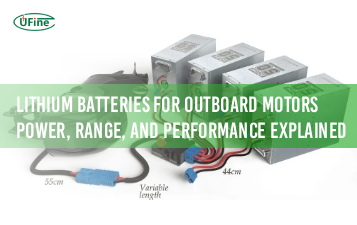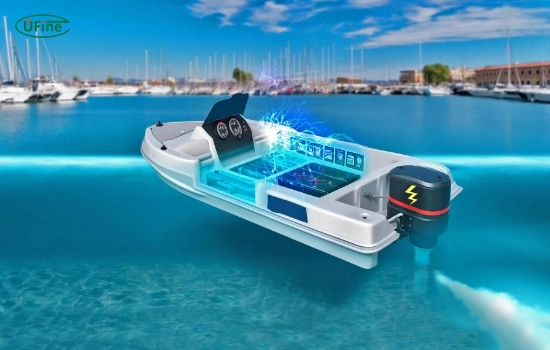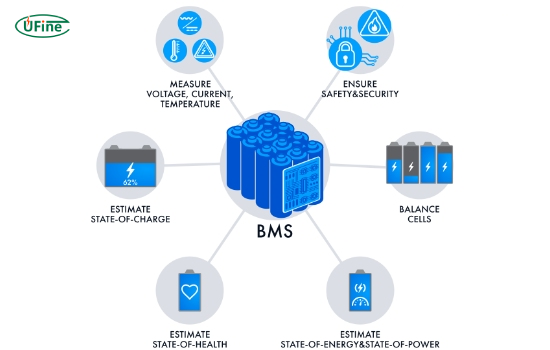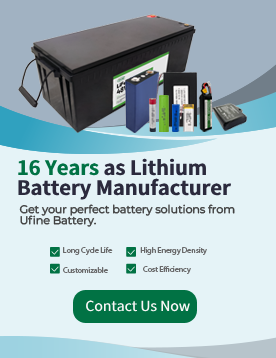
- Part 1. What is a battery outboard?
- Part 2. Why safety matters more on the water
- Part 3. What causes battery outboard fires?
- Part 4. What is a BMS and how does it prevent fire?
- Part 5. What does IP67 waterproofing really mean?
- Part 6. Are lithium batteries safer than lead-acid?
- Part 7. How Ufine battery cells improve safety?
- Part 8. Real-world examples of battery outboard safety
- Part 9. Maintenance tips for battery outboard safety
- Part 10. What to look for when buying a safe battery outboard?
- Part 10. FAQs about battery outboard safety
- Part 11. Final thoughts
How safe are battery outboards? This is a question many boaters ask as electric propulsion becomes more popular. Whether you’re using an e-boat for fishing, leisure, or transport, battery outboard safety is a critical concern. From fire risks to waterproof protection and battery management systems (BMS), understanding how these components work can give you peace of mind when you’re out on the water.
In this detailed guide, we’ll explore the safety features of battery outboards, how they compare to traditional lead-acid systems, and why innovations like Ufine lithium battery cells and IP67 waterproofing make a real difference. Let’s break it down step by step.
Part 1. What is a battery outboard?
A battery outboard is a type of electric motor used to propel boats. Instead of using gasoline or diesel, it runs on energy stored in a rechargeable battery, most commonly lithium-ion. The outboard motor includes a controller, throttle, and sometimes a display for monitoring battery status.
Battery outboards are known for being quiet, clean, and easy to use. They are especially popular for small boats, kayaks, dinghies, and fishing boats. But with their increasing use comes a growing concern: Are they safe?
Part 2. Why safety matters more on the water
Being on the water adds serious risks. Fire, short circuits, or water damage can quickly become life-threatening in a marine environment. Unlike a car, you can’t just pull over. That’s why battery outboard safety is not just a technical detail — it’s essential.
Waterproofing, temperature control, and electrical safety are key to making sure a battery outboard is reliable in real-world conditions.
Part 3. What causes battery outboard fires?
Battery fires are rare but dangerous. The most common causes include:
- Overheating during charging or operation
- Short circuits due to damaged wiring or water intrusion
- Poor-quality cells without proper thermal protection
- Overcharging or deep discharging
When lithium-ion batteries are poorly managed, they can go into thermal runaway, where heat builds up uncontrollably. That’s where the Battery Management System (BMS) plays a crucial role.
Part 4. What is a BMS and how does it prevent fire?
A Battery Management System (BMS) is the brain of the battery. Its job is to monitor and control every aspect of battery operation. A smart BMS protects against:
- Overcharging
- Over-discharging
- Overheating
- Short circuits
- Cell imbalance
The BMS constantly checks each cell’s voltage and temperature. If it detects any sign of danger, it safely shuts down the system. This prevents heat buildup, which is the main cause of battery fires.
Ufine battery cells, for example, come with a high-precision BMS that offers multi-layer protection. These systems are specifically designed to work in marine environments, offering better safety than many cheaper alternatives.
Part 5. What does IP67 waterproofing really mean?
IP67 is a waterproof rating that means a device can:
- Resist dust completely, and
- Withstand immersion in water up to 1 meter for 30 minutes
For battery outboards, this protection is vital. Saltwater, rain, and splashes are all part of the boating experience. If water gets into the battery, it can cause a short circuit or corrosion, both of which are dangerous.
Top-tier battery outboards are sealed to IP67 standards, making them safe even in harsh marine conditions. Some models go beyond with additional coatings and sealing layers to block salt and humidity.
Part 6. Are lithium batteries safer than lead-acid?
In many ways, yes — especially when built with quality components.
| Feature | Lead-Acid | Lithium (with BMS) |
|---|---|---|
| Fire Risk | Medium | Low |
| Waterproofing | Poor | Excellent (if IP67) |
| Weight | Heavy | Light |
| Cycle Life | 300–500 | 2000+ |
| Maintenance | High | Low |
Old-style lead-acid batteries can leak acid and are prone to overheating under load. They also don’t have built-in smart systems like lithium batteries do. Modern lithium batteries, especially those using Ufine high-quality cells, are designed for safety from the ground up.
Part 7. How Ufine battery cells improve safety?
Not all lithium batteries are equal. Ufine lithium cells stand out for their:
- High thermal stability
- Low internal resistance
- Strong protective housing
- Advanced BMS integration
These features work together to ensure stable performance and long life, even in demanding conditions. Ufine batteries are also tested under strict safety standards, including:
- Drop tests
- Crush tests
- Overcharge and short circuit tests
This level of quality makes them a preferred choice for marine applications.
Part 8. Real-world examples of battery outboard safety
Here are a few situations where safety design made a difference:
- Storm sailing: A boater caught in a rainstorm found their IP67-rated battery kept working flawlessly, even after being soaked.
- Overload detection: A faulty propeller caused a power surge. The BMS detected the overload and shut down the motor before any damage occurred.
- Accidental drop: A kayak fisherman dropped his battery pack into the sea. It was fully sealed and recovered without damage.
These stories show why investing in a quality battery outboard is not just about performance — it’s about safety and reliability.
Part 9. Maintenance tips for battery outboard safety
Even the safest battery needs proper care. Follow these simple steps:
- Charge with the correct charger
- Store in a cool, dry place
- Inspect for damage or corrosion
- Avoid deep discharges
- Don’t open sealed battery packs
Always follow the manufacturer’s safety guidelines. Keep your battery clean, dry, and away from extreme heat.
Part 10. What to look for when buying a safe battery outboard?
When shopping for a battery outboard, check for the following:
- IP67 waterproof rating
- Smart BMS with multiple protections
- High-quality lithium cells (like Ufine)
- Certifications (CE, UL, UN38.3)
- Reputable brand and warranty
Don’t just go for the cheapest option. Safety, reliability, and performance are worth the investment.
Part 10. FAQs about battery outboard safety
Can a battery outboard catch fire?
Yes, but it’s rare. Fires usually happen when the battery is poorly made or lacks a good BMS. Quality batteries with thermal protection are much safer.
Is IP67 waterproofing enough for marine use?
Yes. IP67 means the battery can handle splashes, rain, and short-term submersion. It’s a must-have for any boat battery.
How long do lithium battery outboards last?
With a good BMS and quality cells, they can last over 2000 charge cycles, which often means 5–10 years of use.
Are lithium batteries better than lead-acid for outboards?
Definitely. Lithium batteries are lighter, safer, and require less maintenance. They also last much longer and perform better in tough conditions.
What is the role of the BMS in battery safety?
The BMS prevents overcharging, overheating, and short circuits. It’s a key part of modern battery safety.
Part 11. Final thoughts
Battery outboards are safe, efficient, and eco-friendly — when built right. With waterproof lithium batteries, a smart BMS, and trusted brands like Ufine, you can enjoy boating with peace of mind. Always check for IP67 rating, multi-layer safety systems, and cell quality before you buy.
Related Tags:
More Articles

Lithium Batteries for Outboard Motors: Power, Range, and Performance Explained
Discover why lithium batteries are ideal for outboard motors, offering lighter weight, longer life, and higher performance compared to lead-acid options.
How Battery Outboards Are Changing the Future of Boating
Battery outboards are reshaping boating with clean, quiet, and efficient power. Learn how electric motors are driving the future of sustainable marine travel.
What Causes Battery Rust and How to Prevent It Effectively
Learn what causes battery rust, how to spot corrosion early, and effective ways to clean and prevent it to keep your batteries safe and long-lasting.
12.8 Volt Lithium Battery Guide: Chemistry, Performance, and Applications
Discover how 12.8V LiFePO4 batteries offer longer life, higher efficiency, and safer power for solar systems, RVs, boats, and backup energy solutions.
Battery Rust vs Corrosion: Key Differences and How to Deal With Each
Learn the key differences between battery rust and corrosion, their causes, and how to fix each. Discover why lithium batteries are built to resist both issues.




